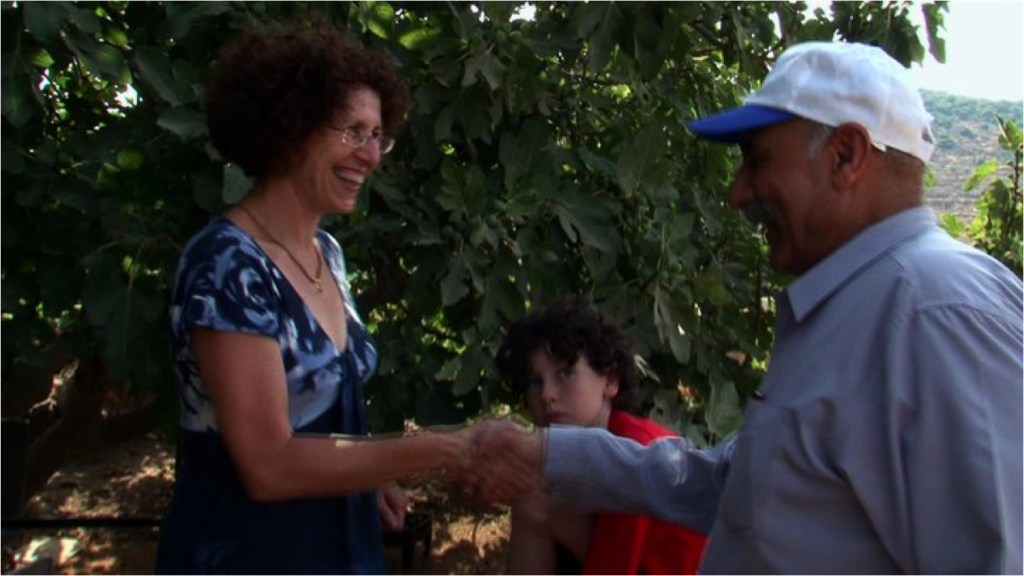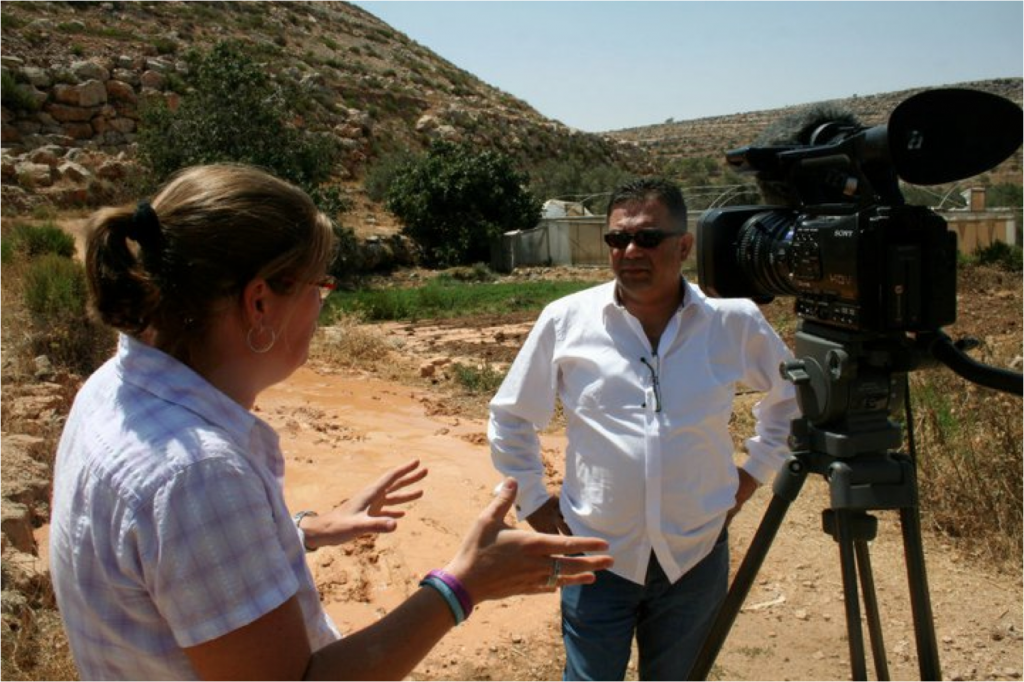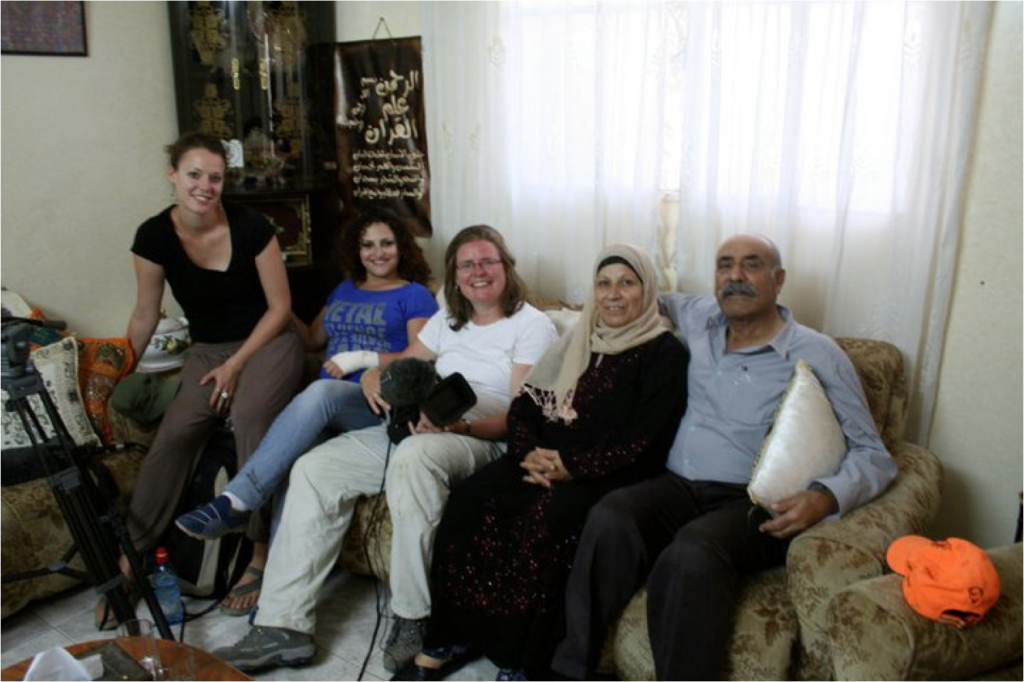By Joshka Wessels
PART 2: The case of Wadi Fukin, an example of environmental peacebuilding
To illustrate what is meant with environmental peacebuilding in practice and the many challenges that come with this kind of approach, I would like to focus on the human-environment nexus at local level in the Jordan River Basin. This was the topic of my postdoctoral research at Lund University between 2011-2014 and a documentary that I filmed and produced in 2010. With respect to one of the most conflictuous ecosystems in the world, the Jordan River Basin, it sounds maybe strange to look at the natural environment as a motivation for enemies to work together. But interestingly, the overwhelming common denominator in all six basins in the Middle East and North Africa (MENA) region – the Euphrates, the Tigris, the Jordan, the Nile, the Litani and the Orontes -, is the potential of water body management to foster peace and democratic stability in the region (Amery and Wolf, 2000; Kramer, 2008; Harari and Roseman, 2008; Wessels, 2009; FoEME, 2010).
Looking at environmentalism in religion, we can distinguish common ground of perceiving nature as ”Divine and God-given” (Tucker and Grim, 1999). In a religious framework, God as universal power created nature and therefore our natural environment can be regarded as spiritual, sacred and divine. These principles can be traced back in Islam, Judaism and Christianity, the three main religions in the MENA region that come together in the Jordan River Basin. Some of the holiest places of these three world religions are located in this ecosystem. Environmentalism has certainly been applied as a potential principle of finding common ground in both interfaith peace building efforts and environmental activism in civil society with initiatives by community based NGOs like Greenpeace and Friends of the Earth Middle East (FoEME)– ECOPeace (FoEME, 2010; Schoenfeld, 2011).
Indeed, we observe at local level in the Jordan River Basin, that the environment has in some cases joined together foes from different religious backgrounds. In 2009, I started to film in Israel and the Occupied Palestinian Territories for the development of a documentary project about the Jordan River. On one of these occasions, I met with Palestinian villagers in Wadi Fukin working together with Israeli inhabitants of the neighboring village of Tzur Haddasah, inside Israel proper, within the 1967- ceasefire line borders. Wadi Fukin is part of a wider ecological peace building project run by the regional NGO FoEME-ECOPeace called ”Good Water Neighbors” (FoEME, 2010). My filming resulted in a long documentary film called “Valley of Hope and Despair” of which a shortened version was broadcast worldwide at Al Jazeera International in November 2010 (to watch the film, follow the on-line link here).

The film tells the story of Abu Mazen, who is a Palestinian farmer of Wadi Fukin in the occupied Palestinian West Bank and his environmental peacebuilding efforts with Tami Doron, who is living in the Israeli village Tzur Hadassah, on the other side of the ceasefire line, the so-called 1967 green line, inside Israel (see figure 1). Abu Mazen’s family has been farming and irrigating the traditional terraces of Wadi Fukin since 600 years. The valley of Wadi Fukin is designated by UNESCO as the best preserved natural heritage in the occupied Palestinian Territory of the West Bank. During the first intifada (1987-1993) the farmers of Wadi Fukin could not reach the markets in nearby Bethlehem. They found ready customers for their biological products, fruits and vegetables, in the nearby Israeli community of Tzur Hadassah. Since that time, a friendly relationship grew between some of the farmers of Wadi Fukin and the Israeli inhabitants of the village of Tzur Hadassah. This relationship sustained until today. Together these two communities have succesfully set up a courtcase to halt the building of a security wall that was planned through the valley, based on environmental arguments (Wessels, 2015). They rally against the expansion of the nearby illegal settlement of Beitar Illit, located in Palestinian territory next to the valley and they have build a so-called neighbours’ path going from Tzur Haddassah to Wadi Fukin. Preserving this unique natural heritage is the main driving force that brings these Israeli and Palestinian activists together. Their ”dreamed-of order” of a well preserved natural heritage of the valley of Wadi Fukin is shared at local level between Israelis and Palestinians across the ceasefire divide. However, this binding love for nature is not reflected at national political level.

On national level and at local level, the mistrust from the Palestinian community towards Israeli’s runs very deep. The Israeli government does not act in the same manner as the Israeli activists from Tzur Hadassah. Continuous military occupation and settlement expansion are main daily threats to the valley of Wadi Fukin, which lies between the areas B and C in the occupied Palestinian Territory of the West Bank. The illegal settlement of Beitar Illit, next to the valley, is the second largest in the West Bank and rapidly growing (Lazaroff, 2017). In my film, I show a timelapse, filmed between 2009 and 2010, in which the rapid growth of the nearby settlement of Beitar Illit is visually documented. From the original 12 km2 of land, the Israeli authorities confiscated 8,5 km2 for settlement construction since the start of the settlement building in 1985. On Fridays, Israeli army soldiers swim in the Palestinian irrigation ponds in Wadi Fukin and on Saturdays, the settlement of Beitar Illit often lets the sewage water flow from the hills onto the Palestinan fields (see figure 2). Sewage spilling is a common practice of deliberate environmental pollution, together with pollution by Israeli factories in the occupied West bank, avoiding stringent Israeli environmental laws (Dresse et al., 2016). Therefore some Palestinians refuse to work or cooperate with any Israelis, even if they have good intentions for protecting the environment, such as the Israeli activists of Tzur Hadassah. Despite this animosity, through their environmental activism, the two local peace activist communities have managed to solve some part of the sewage problem but this is just a small victory. Tami from Tzur Hadassah summarizes it poignantly in the film, when she says; ’yes, the sewage problem is solved, but we do not have any faith in the peace process in the Middle-East’.

Conclusion
The case of Wadi Fukin indicates that environmental peacebuilding is indeed possible at a local level, in a situation when a ceasefire agreement has led to cessation of armed conflict and adversaries are working together to protect the environment. The Wadi Fukin case also shows however that despite the shared love for nature and the shared visions of a Geertzian ”dreamed-of order” of an ecological paradise in Wadi Fukin, political developments and power dimensions at a larger scale, at national level, can seriously hamper constructive environmental peacebuilding. For any kind of ecological approach to peace to succeed at a national level, this kind of approach to peacebuilding still has a very long way to go.
On-line links:
The documentary film ”Valleys of Hope and Despair” shortened version broadcast at Al Jazeera International
https://www.youtube.com/watch?v=WTa4JARwkyY
”Valleys of Hope and Despair, peacebuilding through environmental documentaries” Powerpoint presentation by Joshka Wessels at the 4th International Conference on Peace & Reconciliation: mediating peace: reconciliation through Art, Music and Film, 6-9 November, 2012, Jerusalem, Israel. https://www.slideshare.net/Joshka_Wessels/ipcr-wessels
